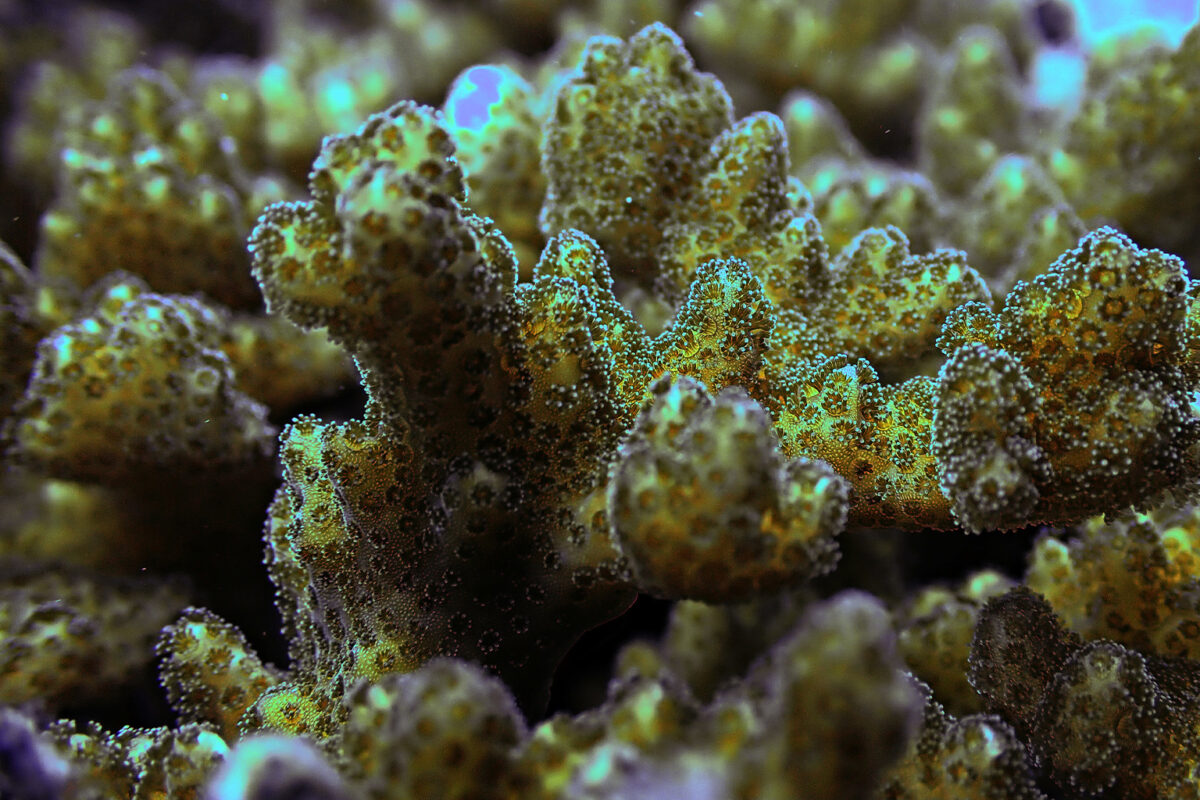Microbiomes may be corals’ secret weapon against climate change: Study – Mongabay

Report on Coral Holobiont Thermotolerance and Implications for Sustainable Development Goals
A study investigating the mechanisms of coral resilience to thermal stress provides critical insights for achieving United Nations Sustainable Development Goals, particularly SDG 14 (Life Below Water) and SDG 13 (Climate Action). Research conducted on Pocillopora corals in Panama highlights the integral role of the entire coral holobiont—the coral animal, its symbiotic algae, and its microbiome—in adapting to rising ocean temperatures.
Research Framework and Contribution to SDG 9: Innovation
Methodology
The research team employed an innovative and holistic approach to assess coral heat tolerance, aligning with SDG 9 (Industry, Innovation, and Infrastructure) by utilizing advanced scientific techniques.
- Comparative Study Sites: Researchers collected genetically similar Pocillopora corals from two distinct environments on Panama’s Pacific coast:
- The Gulf of Panama, characterized by seasonal upwelling that causes significant temperature fluctuations.
- The Gulf of Chiriquí, which maintains relatively stable water temperatures.
- Holobiont Analysis: The study was the first in the Eastern Pacific to assess heat tolerance by examining the entire holobiont, including the coral’s genome, physiology, symbionts, and microbiome, treating them as a single functional unit under climate change stress.
- Technological Application: The Coral Bleaching Automated Stress System (CBASS) was used to conduct rapid, portable heat stress experiments. This system subjected corals to a range of temperatures (28.5-36°C) over eight hours to measure their physiological response, providing a standardized “cardiac stress test” for corals.
Key Findings: Enhancing Resilience for SDG 13 and SDG 14
Environmental History and Microbiome Influence
The study’s findings demonstrate that environmental conditioning is a primary driver of coral resilience, offering a pathway to bolster marine ecosystems against the impacts of climate change as mandated by SDG 13 and SDG 14.
- Superior Thermotolerance: Corals from the Gulf of Panama, accustomed to temperature variability from upwelling, exhibited significantly greater resilience to heat stress compared to those from the stable environment of the Gulf of Chiriquí.
- Microbiome’s Protective Role: The microbiome of the resilient corals was found to be a key factor in their enhanced tolerance. These corals were more effective at producing enzymes that neutralize harmful reactive oxygen molecules generated during heat stress, a mechanism that mitigates the onset of bleaching.
- Acclimatization as a Buffer: This pre-conditioning acts as a natural “climate change insurance,” suggesting that corals adapted to variable environments may retain beneficial traits even when dispersed to calmer locations.
Genetic and Symbiotic Factors
The research identified specific biological traits that contribute to heat tolerance, providing valuable information for targeted conservation and restoration efforts.
- Key Genetic Markers: Genetic analysis of the Gulf of Panama corals revealed the presence of specific genes that appear to help the coral distinguish between healthy and dying algal symbionts and maintain the integrity of key proteins during thermal stress.
- Power of Symbiosis: The study confirms that beneficial symbiotic relationships can significantly enhance survival, allowing corals with similar genetic backgrounds to exhibit vastly different resilience levels based on their holobiont composition.
Conclusion: A Collaborative Path Forward for Marine Conservation
Informing Conservation Strategies
This research directly supports the targets of SDG 14 by providing a scientific basis for prioritizing conservation efforts.
- Identifying naturally resilient coral populations is crucial for establishing marine protected areas and sourcing corals for restoration projects.
- Understanding the beneficial traits of the holobiont can guide efforts, such as selective breeding, to enhance the resilience of more vulnerable coral populations.
Advancing SDG 17: Partnerships for the Goals
The study, led by the Smithsonian Tropical Research Institute in collaboration with multiple international universities, exemplifies SDG 17 (Partnerships for the Goals). Such international scientific cooperation is essential for addressing complex global challenges like climate change and biodiversity loss. The findings underscore that a comprehensive understanding of the coral holobiont is fundamental to developing effective strategies to protect vital marine ecosystems for future generations.
Analysis of Sustainable Development Goals in the Article
1. Which SDGs are addressed or connected to the issues highlighted in the article?
-
SDG 13: Climate Action
The article directly addresses the impacts of climate change, specifically the rising ocean temperatures that “set new heat records.” The entire research is framed as a response to the “heat stress” on coral reefs, which is a direct consequence of global warming. This connects the article’s content to the urgent need to combat climate change and its impacts.
-
SDG 14: Life Below Water
This is the most central SDG to the article. The research focuses on coral reefs, which are critical marine ecosystems. The article discusses threats to these ecosystems (coral bleaching), the importance of their health and resilience, and the need to “sustainably manage and protect marine and coastal ecosystems.” The study’s goal of identifying resilient corals is directly aimed at conserving marine biodiversity and improving ocean health.
-
SDG 9: Industry, Innovation, and Infrastructure
The article highlights the role of scientific research and technological innovation in addressing the problem. The study itself is an example of advanced scientific research. Furthermore, it mentions a specific piece of technology, the “Coral Bleaching Automated Stress System, or CBASS,” described as a “cardiac stress test for corals.” This represents an innovation designed to enhance research capacity in marine biology.
2. What specific targets under those SDGs can be identified based on the article’s content?
-
Under SDG 13: Climate Action
-
Target 13.1: Strengthen resilience and adaptive capacity to climate-related hazards and natural disasters in all countries.
The article’s core focus is on understanding the natural resilience and adaptive capacity of corals to the climate-related hazard of extreme ocean heat. The research identifies that corals in the Gulf of Panama have a higher resilience due to environmental factors and their microbiomes, which is a direct investigation into adaptive capacity.
-
Target 13.1: Strengthen resilience and adaptive capacity to climate-related hazards and natural disasters in all countries.
-
Under SDG 14: Life Below Water
-
Target 14.2: By 2020, sustainably manage and protect marine and coastal ecosystems to avoid significant adverse impacts, including by strengthening their resilience, and take action for their restoration in order to achieve healthy and productive oceans.
The research is explicitly aimed at understanding and “strengthening their resilience.” By identifying the mechanisms (microbiome, genetics, environment) that allow some corals to “cope with heat extremes better than others,” the study provides crucial knowledge for conservation efforts to protect these marine ecosystems from the adverse impacts of climate change.
-
Target 14.a: Increase scientific knowledge, develop research capacity and transfer marine technology… in order to improve ocean health and to enhance the contribution of marine biodiversity to the development of developing countries.
The study, led by the Smithsonian Tropical Research Institute in Panama, is a clear example of increasing scientific knowledge about coral holobionts and thermotolerance. The use of the portable CBASS system demonstrates the development and application of marine technology to build research capacity directly in the field, contributing to a better understanding of how to improve ocean health.
-
Target 14.2: By 2020, sustainably manage and protect marine and coastal ecosystems to avoid significant adverse impacts, including by strengthening their resilience, and take action for their restoration in order to achieve healthy and productive oceans.
-
Under SDG 9: Industry, Innovation, and Infrastructure
-
Target 9.5: Enhance scientific research, upgrade the technological capabilities of industrial sectors in all countries… encouraging innovation and substantially increasing the number of research and development workers…
The article showcases enhanced scientific research into coral biology. The development and use of the CBASS system is a tangible example of upgrading technological capabilities for marine science. This type of research encourages further innovation in the field of marine conservation and biology.
-
Target 9.5: Enhance scientific research, upgrade the technological capabilities of industrial sectors in all countries… encouraging innovation and substantially increasing the number of research and development workers…
3. Are there any indicators mentioned or implied in the article that can be used to measure progress towards the identified targets?
- Coral Heat Tolerance Thresholds: The article mentions the experiment used a range of temperatures from “28.5-36° Celsius (83.3-96.8° Fahrenheit).” The maximum temperature a coral can withstand before bleaching is a direct, measurable indicator of its resilience (Target 13.1 and 14.2).
- Coral Bleaching Status: The article defines bleaching as when “corals eject their symbiotic algae.” The presence, severity, or absence of bleaching in response to heat stress is a key visual and biological indicator of coral health and resilience.
- Microbiome Composition: The study found that the microbiome plays an “outsized role” in boosting resilience. Analysis of the specific composition of microorganisms (algae, bacteria) within the coral holobiont serves as an indicator of a coral’s adaptive capacity.
- Enzyme Production Levels: The article states that resilient corals “were better at producing enzymes that neutralize” harmful molecules produced during heat stress. Measuring the levels of these specific enzymes is a quantifiable biochemical indicator of a coral’s coping mechanism (Target 13.1).
- Identification of Genetic Markers: The research identified “key genetic differences” in resilient coral populations, including a gene that helps determine the health of algal symbionts. These genes can be used as indicators to identify resilient coral populations for conservation and restoration efforts (Target 14.2).
4. Summary Table of SDGs, Targets, and Indicators
| SDGs | Targets | Indicators |
|---|---|---|
| SDG 13: Climate Action | 13.1: Strengthen resilience and adaptive capacity to climate-related hazards. |
|
| SDG 14: Life Below Water |
14.2: Sustainably manage and protect marine and coastal ecosystems, including by strengthening their resilience.
14.a: Increase scientific knowledge, develop research capacity and transfer marine technology. |
|
| SDG 9: Industry, Innovation, and Infrastructure | 9.5: Enhance scientific research and upgrade technological capabilities. |
|
Source: news.mongabay.com

What is Your Reaction?
 Like
0
Like
0
 Dislike
0
Dislike
0
 Love
0
Love
0
 Funny
0
Funny
0
 Angry
0
Angry
0
 Sad
0
Sad
0
 Wow
0
Wow
0

















































:focal(1500,1000)/https://media.globalcitizen.org/a6/9a/a69a4720-d8a1-4715-b596-18738d03c05c/rotary_polio_hero_image.jpg?#)






/countries/sri-lanka/photo-credit---dmc-sri-lanka.tmb-1200v.jpg?sfvrsn=dc298bcc_1#)

















